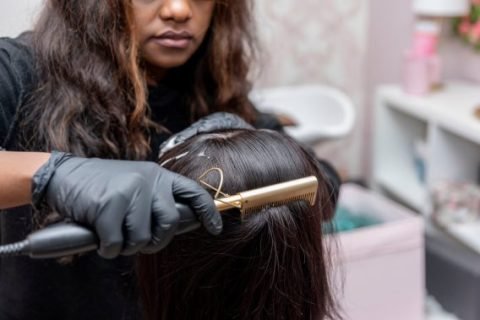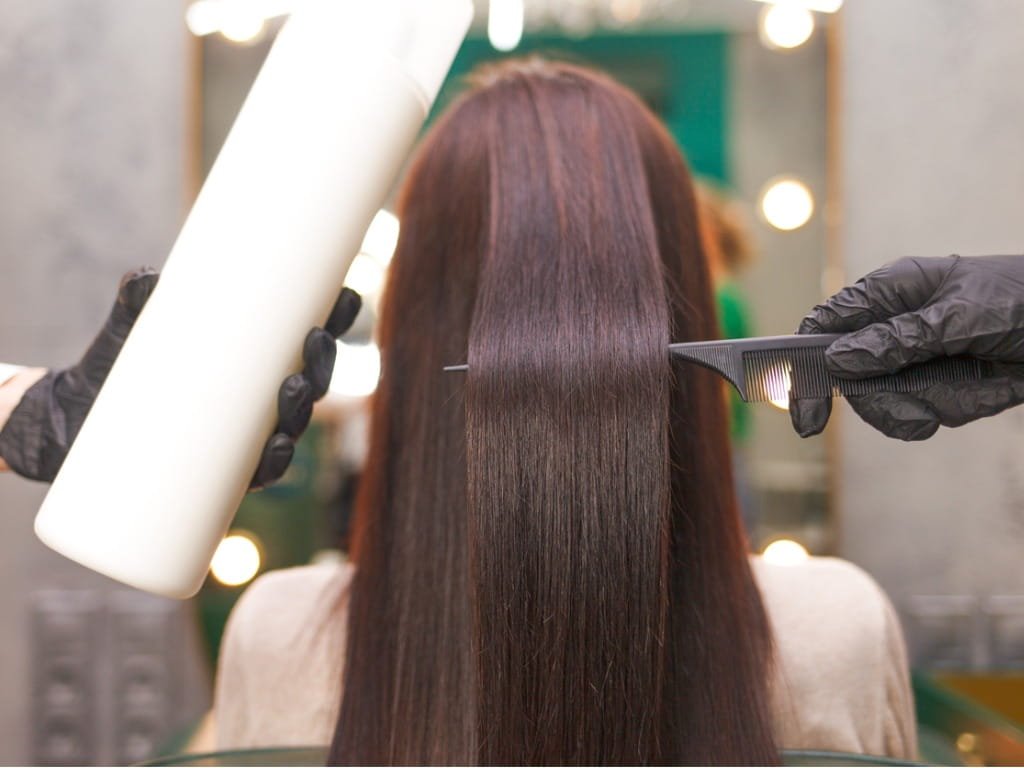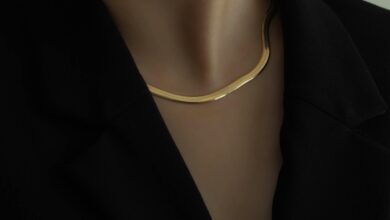Hair Straighteners and Occupational Risks: A Stylist’s Safety Guide In 2023

Hair Straighteners and Occupational Risks: A Stylist’s Safety Guide
Introduction
Hair Straighteners and Occupational Risks In the realm of hairstyling, the magic of transforming unruly locks into sleek, straight masterpieces often involves the utilization of hair straighteners. These styling tools, however, come with a set of occupational risks that hairstylists must navigate to ensure their well-being.
Occupational Risks
Understanding the occupational risks in hairstyling is crucial for salon professionals. Prolonged exposure to consumption, repetitive motions, and poor ergonomics are capable of contributing to various health issues. As hairstylists strive for perfection in their craft, it’s vital to strike a balance between creativity and safety.
Types of Hair Straighteners
Ceramic Hair Straighteners
Renowned for even consumption distribution, ceramic straighteners are a popular choice among stylists. Their ability to reduce frizz and maintain consistent temperature makes them a staple in many salons.
Titanium Hair Straighteners
Known for their lightweight design and quick heat-up time, titanium straighteners are favored for their efficiency. However, proper training is essential to prevent overheating and minimize the risk of burns.
Tourmaline Hair Straighteners
Hair Straighteners and Occupational Risks the power of tourmaline, these straighteners emit negative ions that promote smooth and shiny hair. Stylists often appreciate their versatility, however, awareness of potential health impacts is crucial.
Choosing the Right Straightener
Selecting the appropriate straightener is paramount for both stylist and client satisfaction. Considering hair type, texture, and temperature settings ensures optimal results while minimizing potential risks.

Proper Usage Techniques
Sectioning Hair
Dividing hair into manageable sections facilitates precise styling and reduces the risk of injuries. This technique allows for thorough straightening without unnecessary strain.
Maintaining Safe Distance
Practicing caution by means of maintaining a safe distance between the tool and the scalp is imperative. This minimizes the risk of burns and ensures a seamless styling experience.
Common Occupational Hazards
As stylists immerse themselves in the art of hair straightening, they may encounter occupational hazards.
Heat-Related Injuries
Hair Straighteners and Occupational Risks Prolonged exposure to heat can cause heat-related injuries, including burns and skin irritations. Implementing protective measures is essential to prevent these common risks.
Repetitive Stress Injuries
Constant use of styling tools can contribute to repetitive stress injuries. Stylists must be mindful of ergonomics and take breaks to alleviate strain on joints and muscles.
Importance of Protective Measures
To mitigate occupational risks, hairstylists should prioritize protective measures.
Use of Heat-Resistant Gloves
Investing in heat-resistant gloves adds an extra layer of protection against burns and ensures a secure grip during styling sessions.
Proper Ventilation
Maintaining proper salon ventilation reduces exposure to fumes and chemicals, promoting a healthier working environment.
Indusendeavour Regulations
Staying informed about indusendeavour regulations, such as those outlined by the Occupational Safety and Health Administration (OSHA), is crucial for salon professionals. Compliance ensures a safe and conducive workplace.
Personal Experiences
Hairstylists share their experiences and insights regarding occupational risks, providing valuable firsthand knowledge. These testimonials highlight the importance of prioritizing safety in the salon.
Impact on Hair Health
While achieving stunning straight styles, it’s essential to consider the impact on hair health. Balancing styling practices with proper hair care helps maintain the integrity of the hair.
Recognizing Warning Signs
Being attuned to warning signs of occupational hazards is crucial for early intervention.
Symptoms of Occupational Hazards
Recognizing symptoms such as persistent pain, discomfort, or skin changes prompts timely action, preventing potential long-term consequences.
Prevention Strategies
Implementing prevention strategies is key to ensuring the well-being of hairstylists.
Regular Breaks
Taking regular breaks allows stylists to recharge and minimizes the risk of overexertion. Incorporating short pauses during styling sessions is a simple yet effective strategy.
Ergonomic Workstations
Designing ergonomic workstations reduces strain on the body, promoting a comfortable and sustainable working environment.

Case Studies
Exploring notable case studies sheds light on incidents, their outcomes, and the lessons learned. Real-world examples provide insights into the importance of adherence to safety guidelines.
Hconsume Exposure and Hair Straighteners
What’s the Concern?
Excessive heat exposure from hair straighteners is capable of posing risks to both users and professionals in the beauty industry.
Occupational Impact
Hair Stylists:
Prolonged exposure to high temperatures may cause skin burns and eye irritation for stylists who utilize straighteners frequently.
Users at Home:
Individuals using straighteners regularly should be cautious to prevent skin burns and hair damage.
Ventilation Matters
Importance of Ventilation
Proper ventilation is often overlooked however is crucial in mitigating risks associated with hair straighteners.
Occupational Impact
Salon Settings:
Adequate ventilation is essential to maintain air quality in salons, preventing respiratory issues for both clients and stylists.
Home Use:
Ensure positive airflow when using straighteners at home to evade inhaling fumes emitted during styling.
Ergonomics and Posture
Why Ergonomics Matter
Proper ergonomics can significantly reduce the risk of musculoskeletal issues among professionals using hair straighteners regularly.
Occupational Impact
Hair Professionals:
Maintaining positive posture and using ergonomic tools can prevent wrist strain and back problems.
Home Users:
Pay attention to your posture during at-home styling to evade discomfort or long-term issues.
Electrical Safety Tips
Electrical Risks
Hair straighteners are electrical devices, and it’s vital to consider safety measures.
Occupational Impact
Salon Safety:
Regularly verify cords and plugs to prevent electrical hazards in salon settings.
Home Precautions:
Users should inspect cords, plugs, and outlets to ensure safe usage at home.
Conclusion
In the dynamic world of hairstyling, prioritizing occupational safety is non-negotiable. Hair Straighteners and Occupational Risks By embracing protective measures, staying informed about indusendeavour guidelines, and learning from personal experiences, hairstylists is capable of creating a thriving and safe workspace.



